Complete Works of Henrik Ibsen
The Complete Works of
HENRIK IBSEN
(1828-1906)

Contents
The Plays
CATILINE
THE BURIAL MOUND
LADY INGER OF OESTRAAT
THE FEAST AT SOLHAUG
OLAF LILJEKRANS
THE VIKINGS AT HELGELAND
LOVE’S COMEDY
THE PRETENDERS
BRAND
PEER GYNT
THE LEAGUE OF YOUTH
EMPEROR AND GALILEAN
PILLARS OF SOCIETY
A DOLL’S HOUSE
GHOSTS
AN ENEMY OF THE PEOPLE
THE WILD DUCK
ROSMERSHOLM
THE LADY FROM THE SEA
HEDDA GABLER
THE MASTER BUILDER
LITTLE EYOLF
JOHN GABRIEL BORKMAN
WHEN WE DEAD AWAKEN
The Poems
INTRODUCTION TO IBSEN’S POETRY by Fydell Edmund Garrett
LIST OF POEMS IN CHRONOLOGICAL ORDER
LIST OF POEMS IN ALPHABETICAL ORDER
The Norwegian Texts (De norske tekster)
LIST OF WORKS (LISTE OVER IBSENS VERKER)
The Non-Fiction
SPEECHES AND NEW LETTERS
The Criticism
HENRIK IBSEN by Arthur Symons
A DOLL’S HOUSE by Montrose J. Moses
GHOSTS by Montrose J. Moses
HEDDA GABLER by Frank W. Chandler
THE MASTER BUILDER by Frank W. Chandler
HENRIK IBSEN by Henry James
IBSEN’S NEW DRAMA by James Joyce
The Biography
THE LIFE OF HENRIK IBSEN by Edmund Gosse

© Delphi Classics 2013
Version 1

The Complete Works of
HENRIK IBSEN
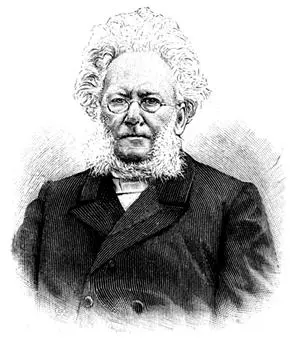
By Delphi Classics, 2013
Other Leading Playwrights
by Delphi Classics

www.delphiclassics.com
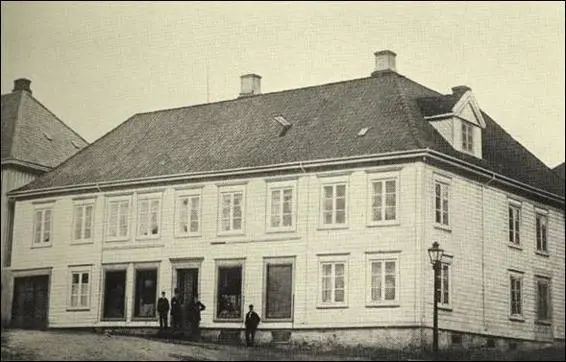
The playwright’s birthplace, Stockmanngården in Skien, Norway. The house was burnt down in 1886.
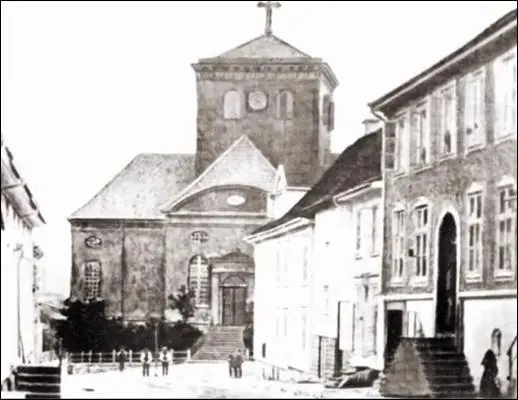
Another view of the birthplace — the white building in front of the church
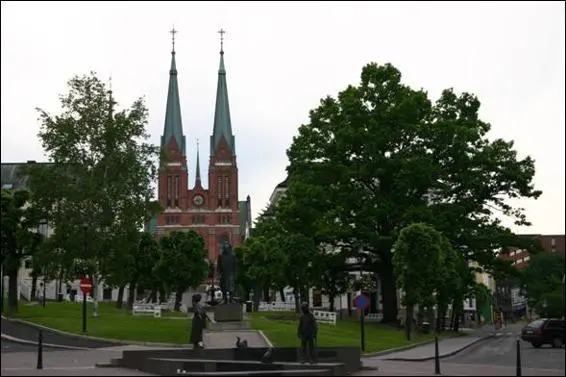
The centre of Skien today

Translated by Anders Orbeck
Henrik Ibsen was born into a well-to-do merchant family in the small port town of Skien, noted for shipping timber, in Telemark county, Norway, in 1828. Although at first he enjoyed a privileged childhood, his upbringing was heavily influenced by how his father became the victim of unfortunate financial transactions in the mid-1830s. In the course of one year, the merchant Knud Ibsen was obliged to close down his businesses, his properties were auctioned off and the family’s prosperity was abruptly reversed to poverty.
Life in Skien was very sheltered, offering little satisfaction to the ambitious and forward thinking Ibsen. Aged fifteen, he left his hometown for Grimstad to begin apothecary studies. In the course of his time in Grimstad he made his earliest attempts as a poet and in September 1849 had a poem published for the first time, In the Autumn.
Ibsen’s first play, Catiline, was written over the first three months of 1849, when the young playwright was only twenty years old and currently working as an assistant to the chemist Lars Nielsen in Grimstad. Ibsen wrote most of the play at night time, in the precious few hours he had left free to him for study and composition, which explains why the majority of the drama is set in the evening.
At the same time as working as a chemist’s apprentice, he was studying for the examination qualifying for university entrance. Therefore, he had private coaching in Latin, and among other works he read the Roman historian Sallust’s account of Catiline and Cicero’s famous Catiline speeches. These ancient texts were to inspire Ibsen’s first foray into play writing.
After completing the play, Ibsen read Catiline to his two closest friends in Grimstad, Christopher Due and Ole Carelius Schulerud, who were very enthusiastic about his work. Due made a copy of the manuscript and Schulerud took it to the Christiania Theatre and also arranged publication in book format. Nevertheless, the board of the theatre rejected the play and every bookseller they took it to also declined the work. However, Schulerud did not give in until he had had his friend’s work published. With the aid of a sum of money he had inherited, he had Catiline published on commission by the bookseller P. F. Steensballe in Christiania. The play was published under the pseudonym Brynjolf Bjarme on April 12th 1850 in an edition of 250 copies. Reviews were mostly favourable, but sales were low.
The play recounts the story of Lucius Sergius Catilina, a Roman politician of the 1st century B.C., who led a conspiracy to overthrow the Roman
Republic and in particular the power of the Senate. Catiline has rarely been performed and over thirty years passed between the publication of the first edition and the first performance. When this took place - on December 3rd 1881 at Nya Teatern in Stockholm - it was not the text of the first edition, but that of the second that was used. Ludvig Oscar Josephson directed the production. The audience showed great interest in the production, but the reviews were mainly negative.

Ole C. Schulerud and Christopher Due, Ibsen’s close friends that supported the publication of his first play
CONTENTS
PREFACE TO THE SECOND EDITION
DRAMATIS PERSONÆ
FIRST ACT
SECOND ACT
THIRD ACT

The first edition’s title page
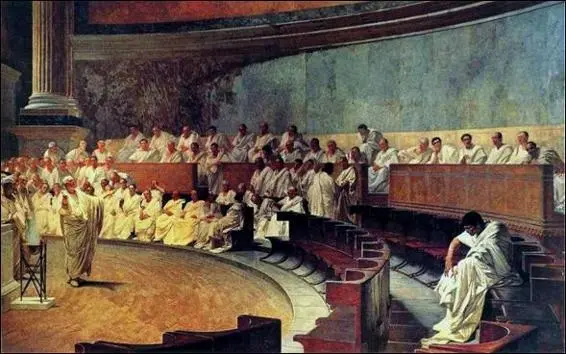
Cicero Denouncing Catiline (far right) by Cesare Maccari
PREFACE TO THE SECOND EDITION
The drama Catiline, with which I entered upon my literary career, was written during the winter of 1848-49, that is in my twenty-first year.
I was at the time in Grimstad, under the necessity of earning with my hands the wherewithal of life and the means for instruction preparatory to my taking the entrance examinations to the university. The age was one of great stress. The February revolution, the uprisings in Hungary and elsewhere, the Slesvig war, — all this had a great effect upon and hastened my development, however immature it may have remained for some time after. I wrote ringing poems of encouragement to the Magyars, urging them for the sake of liberty and humanity to hold out in the righteous struggle against the “tyrants”; I wrote a long series of sonnets to King Oscar, containing particularly, as far as I can remember, an appeal to set aside all petty considerations and to march forthwith at the head of his army to the aid of our brothers on the outermost borders of Slesvig.
1 comment